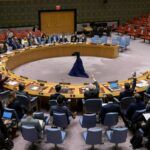Science in the White House
By Arthur Bienenstock | February 24, 2009
One way to understand the value recent U.S. presidents have placed on scientific advice is by examining the structure and agenda of the Office of Science and Technology Policy. When Bill Clinton was president, the office was divided into four portfolios: environment, science, technology, and national security and international affairs. (From 1997 to 2001, I served as associate director for science.) The office was trimmed to two associate directors during the Bush administration, and Barack Obama’s plan for science and innovation wisely calls for a return to Clinton-era staffing levels.
How the specific domains are divided matters less than ensuring that the office’s leadership team can resolve differences cooperatively. Past internal strife within the office decreased its effectiveness considerably. Similarly, it is imperative that the office’s leadership form strong working relationships with other members of the White House staff that have related responsibilities. Over the long run, the office’s goals are more likely to be achieved if they are well aligned with those of the other major White House leaders.
Obama’s plan for science and innovation is the best indication of the office’s agenda. One of the plan’s overarching goals is to double the budgets of key scientific agencies over a 10-year period. When doing so, Obama and his science advisers would do well to raise funding in a steady fashion. Twice before in the last half-century have U.S. officials increased science and technology budgets at unsustainable rates only to have those spending booms followed by relative budget stagnation. Those periods of stagnation were disasters, particularly for young people starting careers in science and technology, and led to diminished interest among high school and college students. It would be far better to increase research budgets at a rate that is sustainable indefinitely, say 1 to 2 percent over inflation or at the rate GDP increases. Initially, Obama should provide a boost of funding for the physical sciences and engineering, as funding for those programs have been essentially flat over a 30-year time span. These budgets could be ramped up markedly now, with growth subsequently maintained at lower levels.
I would recommend a few program priorities to start with: The National Academy of Sciences report “Midsize Facilities: Infrastructure for Materials Research” advocated a program for funding scientific instruments that cost well above $500,000, and such a program would be particularly valuable. I also think that it is important for the office to make permanent the research and development tax credit initiated in 1981. The nation needs a strong, innovative corporate research community if it wants to take full advantage of the benefits science and technology can provide, including staying economically competitive in an expanding global community. The full impact of the tax credit will become known only when companies can count on it year after year.
If an increase in science funding is to truly benefit the nation, faculty must have time to do the hard, time-consuming work of research. Unfortunately, a recent Federal Demonstration Partnership (FDP) report indicates that, on average, faculty researchers are spending 42 percent of their federally funded research time on administrative matters (not including proposal preparation), rather than on the research itself. This is an enormous waste of time for the talented people on whom the nation depends for significant innovative contributions. This administrative burden has risen markedly since the late 1980s, when it was below 20 percent, due both to increased (and appropriate) federal requirements and modifications to the Office of Management and Budget (OMB)’s Circular A-21, which put a cap on reimbursement for administrative support of research. It is vital that the office work with OMB and the FDP to reduce this burden. I recommend that faculty be permitted to charge their contracts directly for administrative support that is directly related to research, as it was before the A-21 modifications.
A primary component of Obama’s plan is to substantially increase the quantity and quality of pre-K–12 science and math teachers. Achieving this goal will require the participation of university science and mathematics faculty in teacher education. The Office of Science and Technology Policy should work with the National Science Foundation and the Education Department to scale up successful programs such as the UTeach and the PhysTEC programs, which have provided guidance and financial assistance for cooperation between university science departments and schools of education. One way to increase science faculty participation would be to allow researchers to fulfill a grant’s outreach requirements by supporting teacher education.
Another major agenda item is science and technology workforce development, in which community colleges play a crucial role. These colleges don’t receive a great deal of federal funding and are frequently neglected in budgeting and appropriations discussions. Yet, they are a major source of in-demand technicians and are an important entry point to higher education for many students. The Office of Science and Technology Policy should ensure that OMB proposes adequate funding for the National Science Foundation’s Advanced Technology Education (ATE) and the Education Department’s Tech-Prep programs—and that the programs cooperate to implement the new curricula funded by the ATE.
Even if these efforts to increase the domestic development of the science and technology workforce are successful, the nation will still require, and benefit from, immigrant scientists and engineers for the indefinite future. In this regard Obama’s science and innovation plan to “create a ‘fast track’ system that allows foreign students that receive advanced technical degrees from U.S. universities to receive an employment-based visa without having to return to their home country” is reassuring. Obama’s plan also promises to “balance visa and export control policies against the possibility that they deter international scientific exchange or send a message to international students, scholars, scientists, and engineers that they are not welcome to the United States.” This is an important step, and the office should ensure that the export control reform efforts initiated in the previous administration are continued without interruption. In general, if the office takes its lead from the well-thought-out Obama science and innovation plan then science education and research will be able to play the central role it deserves in our nation.
Together, we make the world safer.
The Bulletin elevates expert voices above the noise. But as an independent nonprofit organization, our operations depend on the support of readers like you. Help us continue to deliver quality journalism that holds leaders accountable. Your support of our work at any level is important. In return, we promise our coverage will be understandable, influential, vigilant, solution-oriented, and fair-minded. Together we can make a difference.
Topics: Opinion














